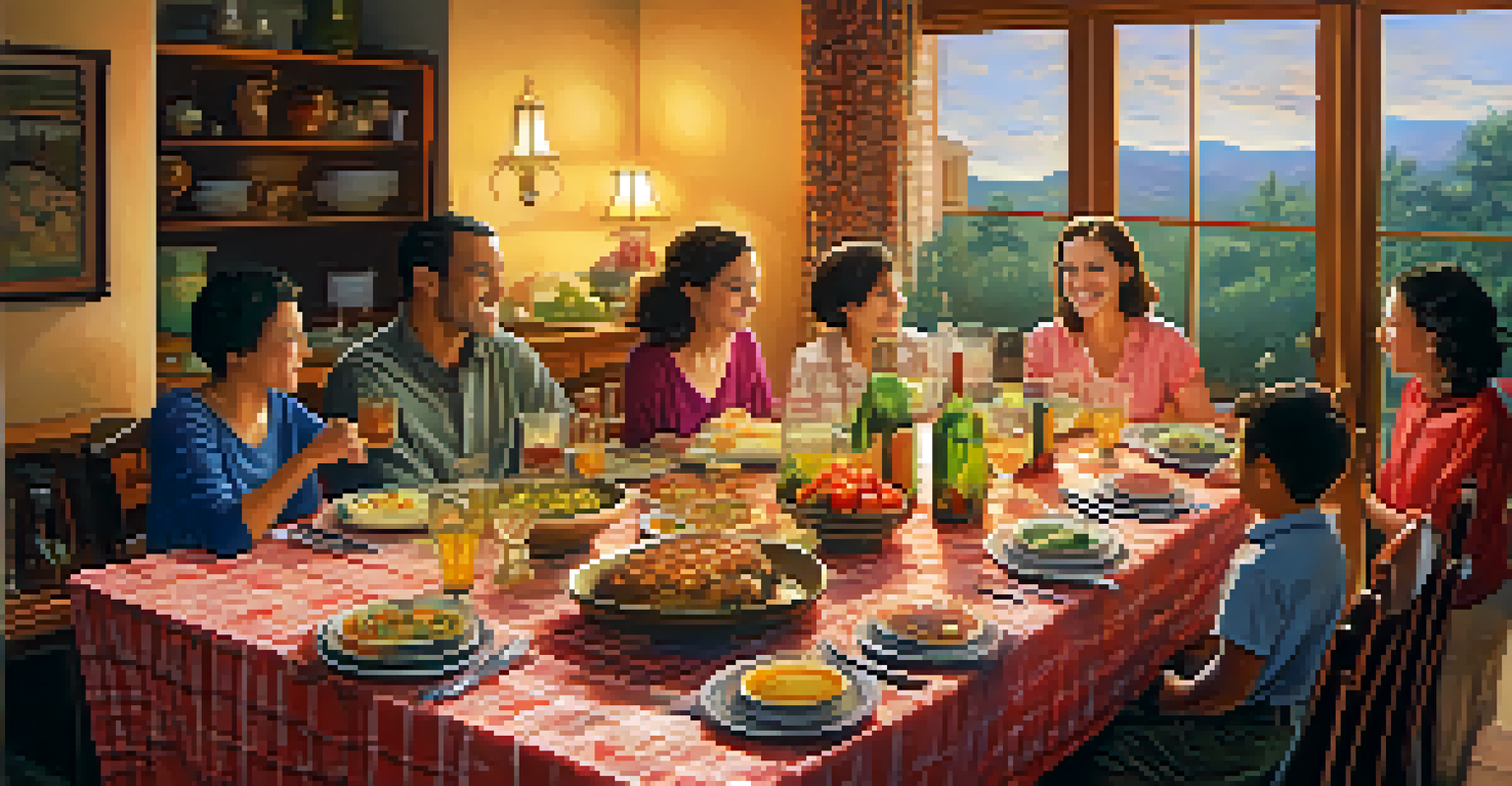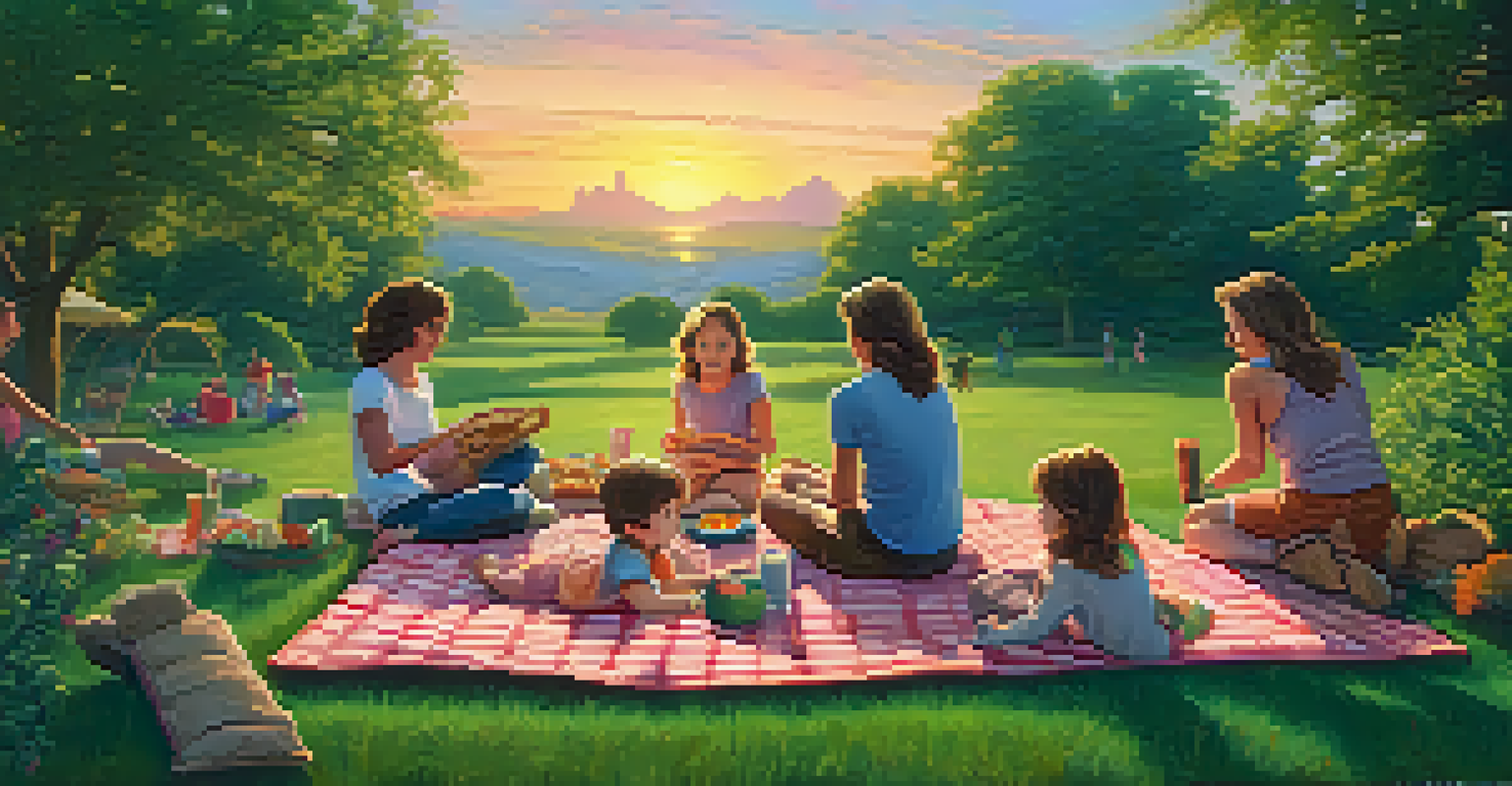The Depiction of Dysfunctional Families in Hollywood Films

Understanding the Concept of Dysfunctional Families
Dysfunctional families are often characterized by conflict, miscommunication, and unmet emotional needs. In films, these families can serve as a microcosm of society, showcasing the struggles many face in their personal lives. They can include a range of issues, from substance abuse to emotional neglect, and their portrayal resonates with viewers who might see echoes of their own experiences.
Family is not an important thing. It’s everything.
For example, in movies like 'The Royal Tenenbaums', we see a family that is beautifully flawed, with each member grappling with their own challenges. This depiction invites the audience to empathize with their struggles, making the dysfunction relatable. The complexity of these characters often leads to both humor and heartbreak, illustrating the multifaceted nature of family life.
Ultimately, understanding what defines a dysfunctional family helps set the stage for exploring their portrayal in Hollywood. It reveals how filmmakers tap into these dynamics to create stories that resonate deeply, allowing viewers to reflect on their own family experiences.
Historical Context of Dysfunctional Families in Film
The depiction of dysfunctional families in cinema isn't new; it has evolved significantly over the decades. Early films often glossed over family issues, presenting an idealized view of domestic life. However, as societal norms shifted, filmmakers began to explore the darker realities of family dynamics, reflecting the changing cultural landscape.

In the 1970s, films like 'Kramer vs. Kramer' broke ground by addressing divorce and its impact on children. This marked a pivotal moment in cinema, as audiences were confronted with the emotional turmoil that can arise from family breakdowns. Such films opened the door for a more honest conversation about familial relationships, showcasing the complexities involved.
Dysfunctional Families Reflect Society
Films depicting dysfunctional families mirror real-life struggles, allowing audiences to connect with their own experiences.
As we moved into the 21st century, the portrayal of dysfunctional families became even more pronounced. Modern films often highlight various forms of dysfunction, from mental health issues to economic struggles, making the narratives more relevant and relatable for contemporary audiences.
Common Themes in Dysfunctional Family Films
Dysfunctional family films often revolve around recurring themes such as betrayal, redemption, and the quest for acceptance. These themes resonate with viewers because they touch on universal human experiences. For instance, many films explore the desire for connection amidst chaos, showcasing the struggle to maintain relationships despite significant obstacles.
The family is one of nature's masterpieces.
Take 'Little Miss Sunshine', for example. This film highlights the family's journey as they support their daughter in a beauty pageant, despite their own individual issues. The comedy and drama that unfold reveal how love and support can coexist with dysfunction, creating a heartwarming narrative.
By weaving these themes into their stories, filmmakers create a rich tapestry of emotions that encourages audience reflection. Viewers are often prompted to consider their own family dynamics, making the cinematic experience both entertaining and thought-provoking.
Character Archetypes in Dysfunctional Family Narratives
In dysfunctional family films, certain character archetypes frequently emerge, each serving a specific role in the family dynamic. Common archetypes include the 'scapegoat', the 'enabler', and the 'lost child', each representing different responses to family dysfunction. These characters help to illustrate the complexities of familial relationships in a way that is both engaging and relatable.
For instance, in 'August: Osage County', the character of Violet Weston is a classic matriarch whose toxic behavior drives the family apart. Her interactions with her daughters reveal the deep-seated wounds that can exist within families, making her both a villain and a victim. This duality allows viewers to empathize with her struggles while also questioning her choices.
Humor Balances Family Struggles
Incorporating humor in dysfunctional family narratives lightens heavy themes, making them more relatable and engaging.
By employing these archetypes, filmmakers create a rich narrative structure that explores the nuances of family life. This not only enhances the storytelling but also allows audiences to see themselves in the characters, deepening their emotional connection to the film.
The Role of Humor in Dysfunctional Family Films
Humor often plays a crucial role in the portrayal of dysfunctional families in films. By incorporating comedic elements, filmmakers can lighten the heavy themes of conflict and struggle, making the material more accessible to audiences. This blend of comedy and drama creates a unique viewing experience that resonates on multiple levels.
For example, in 'The Family Stone', the comedic interactions among family members during a holiday gathering highlight both the absurdity and warmth of family life. The humor serves to alleviate tension, allowing viewers to laugh at relatable situations while also recognizing the underlying issues that the characters face.
This juxtaposition of humor and dysfunction not only entertains but also provides a valuable perspective on the resilience of families. It reminds us that even in the midst of chaos, laughter can be a powerful tool for healing and connection.
Impact of Dysfunctional Family Portrayals on Society
The way dysfunctional families are portrayed in Hollywood films can have a significant impact on societal perceptions of family life. These films often spark conversations about mental health, relationships, and the importance of communication within families. By shining a light on these issues, filmmakers can foster greater understanding and empathy among audiences.
For instance, movies like 'Ordinary People' not only depict the struggles of a family coping with loss but also raise awareness about the importance of therapy and open communication. Such portrayals can encourage viewers to seek help or to approach their own familial issues with more compassion.
Evolving Portrayals in Modern Cinema
The portrayal of dysfunctional families is evolving, with filmmakers exploring diverse perspectives and deeper psychological themes.
Ultimately, the impact of these films extends beyond entertainment; they can serve as catalysts for change. By reflecting real-life struggles, filmmakers contribute to a broader dialogue about family dynamics, encouraging audiences to confront their own experiences and promoting healthier relationships.
Future Trends in the Depiction of Dysfunctional Families
As societal norms continue to evolve, the depiction of dysfunctional families in Hollywood films is likely to undergo further transformation. Emerging filmmakers are increasingly exploring diverse perspectives and experiences, which could lead to richer and more nuanced portrayals. This shift can result in stories that resonate with a wider audience, reflecting the complexities of modern family life.
Moreover, with the rise of streaming platforms, there's more room for experimental narratives that challenge traditional storytelling. We might see films that delve deeper into the psychological aspects of family dysfunction, presenting characters with greater depth and authenticity. This could foster a more profound dialogue around issues like mental health and emotional well-being.

As we look to the future, it's clear that Hollywood will continue to play a crucial role in shaping our understanding of family dynamics. By embracing new ideas and narratives, filmmakers can create stories that not only entertain but also inspire change and foster connection among viewers.